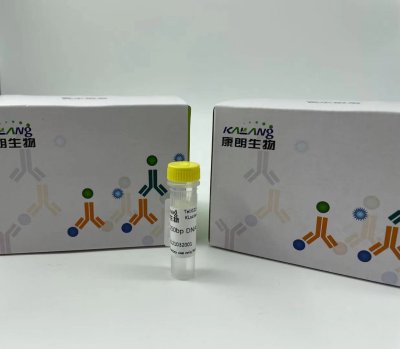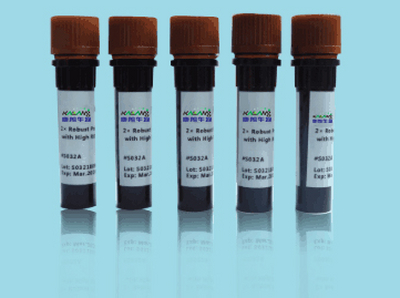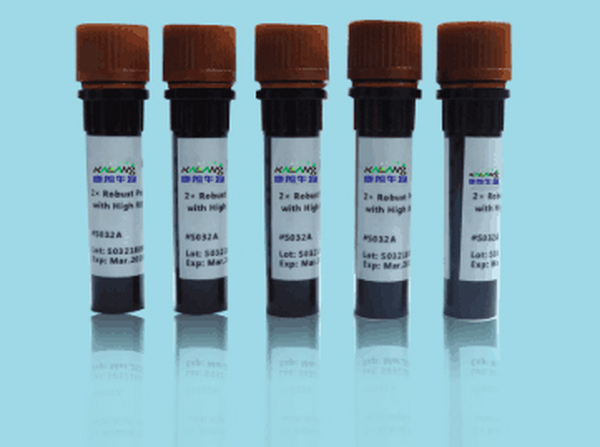QQ:3002763590


客服电话:021-61998208
PJVK rabbit Polyclonal Antibody
PJVK抗体
PJVK抗体应用:WB 1:500-2000The protein encoded by this gene is a member of the gasdermin family, a family which is found only in vertebrates. The encoded protein is required for the proper function of auditory pathway neurons. Defects in this gene are a cause of non-syndromic sensorineural deafness autosomal recessive type 59 (DFNB59). [provided by RefSeq, Dec 2008],
PK1IP rabbit Polyclonal Antibody
PK1IP抗体
PK1IP抗体应用:WB 1:500-2000 ELISA 1:5000-20000function:Negatively regulates the PAK1 kinase. PAK1 is a member of the PAK kinase family, which have been shown to play a positive role in the regulation of signaling pathways involving MAPK8 and RELA. PAK1 exists as an inactive homodimer, which is activated by binding of small GTPases such as CDC42 to an N-terminal regulatory domain. PAK1IP1 also binds to the N-terminus of PAK1, and inhibits the specific activation of PAK1 by CDC42.,similarity:Contains 5 WD repeats.,subunit:Interacts with PAK1.,tissue specificity:Expressed in brain, colon, heart, kidney, liver, lung, muscle, peripheral blood leukocytes, placenta, small intestine, spleen and thymus.,
PK3CB rabbit Polyclonal Antibody
PK3CB抗体
PK3CB抗体应用:WB 1:500-2000 ELISA 1:5000-20000phosphatidylinositol-4,5-bisphosphate 3-kinase catalytic subunit beta(PIK3CB) Homo sapiens This gene encodes an isoform of the catalytic subunit of phosphoinositide 3-kinase (PI3K). These kinases are important in signaling pathways involving receptors on the outer membrane of eukaryotic cells and are named for their catalytic subunit. The encoded protein is the catalytic subunit for PI3Kbeta (PI3KB). PI3KB has been shown to be part of the activation pathway in neutrophils which have bound immune complexes at sites of injury or infection. Alternative splicing results in multiple transcript variants. [provided by RefSeq, Dec 2011],
PKD1 rabbit Polyclonal Antibody
PKD1抗体
PKD1抗体应用:IHC-p 1:50-300polycystin 1, transient receptor potential channel interacting(PKD1) Homo sapiens This gene encodes a member of the polycystin protein family. The encoded glycoprotein contains a large N-terminal extracellular region, multiple transmembrane domains and a cytoplasmic C-tail. It is an integral membrane protein that functions as a regulator of calcium permeable cation channels and intracellular calcium homoeostasis. It is also involved in cell-cell/matrix interactions and may modulate G-protein-coupled signal-transduction pathways. It plays a role in renal tubular development, and mutations in this gene cause autosomal dominant polycystic kidney disease type 1 (ADPKD1). ADPKD1 is characterized by the growth of fluid-filled cysts that replace normal renal tissue and result in end-stage renal failure. Splice variants encoding different isoforms have been noted for this gene. Also, six pseudogenes, closely linked in a known duplicated region on c
PKHA1 rabbit Polyclonal Antibody
PKHA1抗体
PKHA1抗体应用:WB 1:500-2000 ELISA 1:5000-20000pleckstrin homology domain containing A1(PLEKHA1) Homo sapiens This gene encodes a pleckstrin homology domain-containing adapter protein. The encoded protein is localized to the plasma membrane where it specifically binds phosphatidylinositol 3,4-bisphosphate. This protein may be involved in the formation of signaling complexes in the plasma membrane. Polymorphisms in this gene are associated with age-related macular degeneration. Alternate splicing results in multiple transcript variants. A pseudogene of this gene is found on chromosome 5.[provided by RefSeq, Sep 2010],
PKN1 rabbit Polyclonal Antibody
PKN1抗体
PKN1抗体应用:WB 1:500-2000 ELISA 1:5000-20000protein kinase N1(PKN1) Homo sapiens The protein encoded by this gene belongs to the protein kinase C superfamily. This kinase is activated by Rho family of small G proteins and may mediate the Rho-dependent signaling pathway. This kinase can be activated by phospholipids and by limited proteolysis. The 3-phosphoinositide dependent protein kinase-1 (PDPK1/PDK1) is reported to phosphorylate this kinase, which may mediate insulin signals to the actin cytoskeleton. The proteolytic activation of this kinase by caspase-3 or related proteases during apoptosis suggests its role in signal transduction related to apoptosis. Alternatively spliced transcript variants encoding distinct isoforms have been observed. [provided by RefSeq, Jul 2008],
PKN3 rabbit Polyclonal Antibody
PKN3抗体
PKN3抗体应用:WB 1:500-2000 ELISA 1:5000-20000catalytic activity:ATP + a protein = ADP + a phosphoprotein.,domain:The C1 domain does not bind the diacylglycerol (DAG).,enzyme regulation:Two specific sites, Thr-718 (activation loop of the kinase domain) and Thr-860 (turn motif), need to be phosphorylated for its full activation.,function:Contributes to invasiveness in malignant prostate cancer.,PTM:Autophosphorylated.,similarity:Belongs to the protein kinase superfamily. AGC Ser/Thr protein kinase family. PKC subfamily.,similarity:Contains 1 AGC-kinase C-terminal domain.,similarity:Contains 1 protein kinase domain.,similarity:Contains 3 REM (Hr1) repeats.,subcellular location:Nuclear and perinuclear Golgi region.,tissue specificity:Expressed in prostate tumors and various cancer cell lines. Not expressed in adult tissues.,
最新动态
-

Anti-GNGT1 KL20092-001(50ul)
2021-10-11 -

Anti-GNGT1 antibody(50ul) KL20093-001
2021-10-11 -

MUC5AC (PT2058) mouse Monoclonal Antibody
2021-01-06 -

mOrange mouse Monoclonal Antibody(Mix)
2021-01-05
热门标签
- Histone H3 rabbit Polyclonal Antibody Histone H3抗体
- EGFR rabbit Polyclonal Antibody EGFR抗体
- Cy3 Conjugated
- AbFluor™ 555 Conjugated
- AbFluor™ 680 Conjugated
- AbFluor™ 350 Conjugated
- AbFluor™ 647 Conjugated
- AbFluor™ 594 Conjugated
- AbFluor™ 405 Conjugated
- Cy5 Conjugated
- AbFluor™ 488 Conjugated
- Cyclophilin B抗体 Cyclophilin B Monoclonal Antibody(2B10)
- COX IV抗体 COX IV Monoclonal Antibody(6C8)
- PCNA抗体 PCNA Monoclonal Antibody(12D10)
- FAK rabbit Polyclonal Antibody FAK抗体
邮箱:3002763590@qq.com
电话:021-61998208

扫码关注微信公众号






